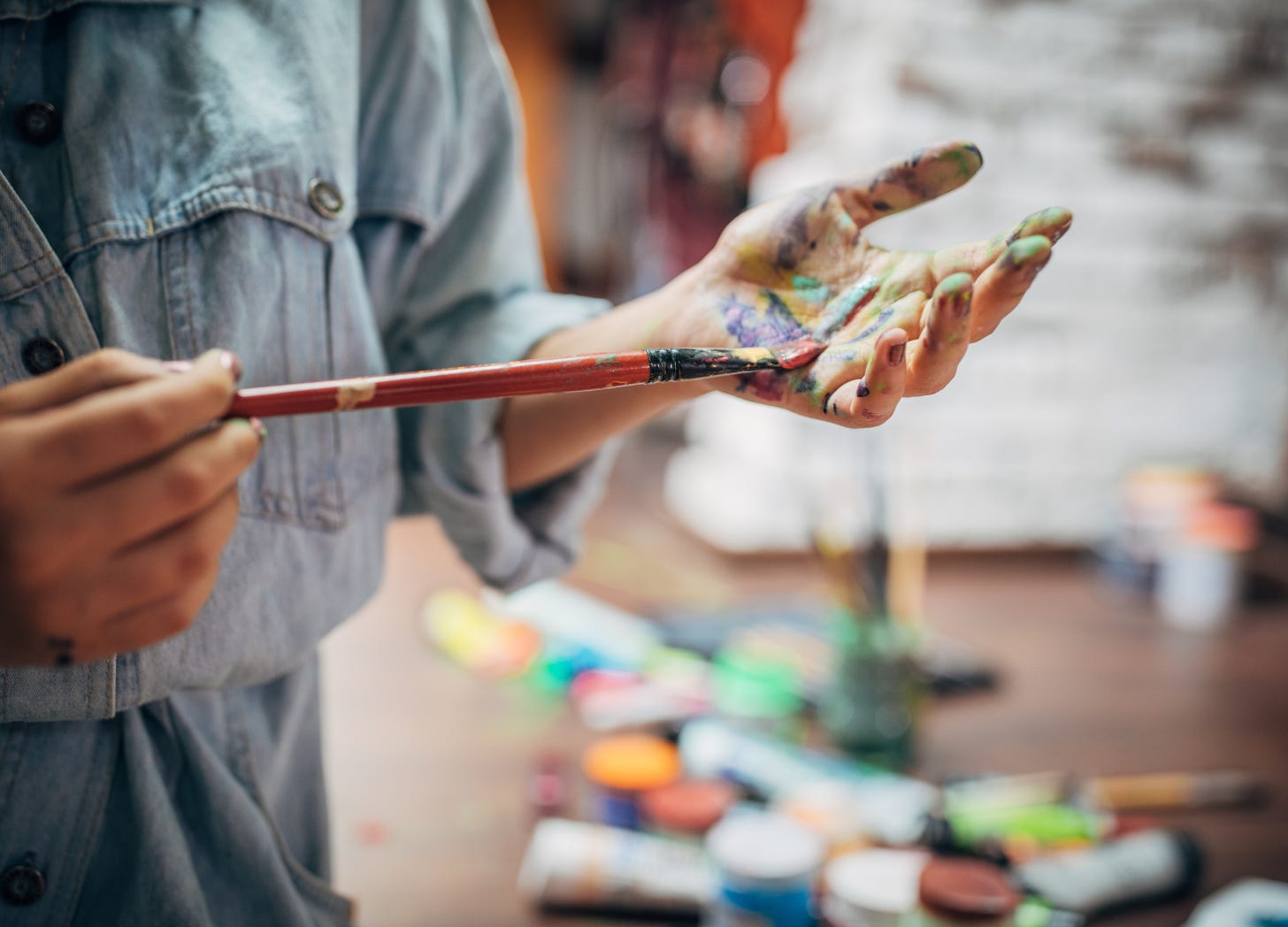It hit me during a local college watercolor class.
The instructor was talented. Kind. Generous with her time. She laid out the steps clearly. Everyone around me was humming with focus and excitement.
I, on the other hand, was silently screaming.
Because I didn’t want to paint like that.
It wasn’t a tantrum—I wasn’t being stubborn or dismissive. It was something deeper, something honest. The style didn’t resonate. The method felt restrictive. The final product? Lovely for someone else, but not for me.
And as I sat there, paintbrush in hand, copying something I didn’t care about, I felt a familiar knot in my chest—one I’ve known since childhood: that knot of trying to fit in, be good, do it “right”… while abandoning myself in the process.
That’s when it landed:
I don’t want to make art that looks good.
I want to make art that feels true.
There’s a difference between learning and mimicking.
We need teachers.
We need structure, inspiration, guidance.
I’ve learned so much from watching others work.
But there’s a turning point—a quiet threshold—where borrowing becomes burdening.
Where instead of learning, we’re squeezing ourselves into someone else’s vision.
That’s not art. That’s costume.
And women, especially, have worn enough of those.
We’ve been told to smile politely, trace the outline, stay in the lines, and not make a mess.
But real art? It’s messy. It’s loud. It’s silent. It’s sacred. It’s whatever you say it is.
This doesn’t mean we stop learning.
It means we start listening.
We can be in awe of someone’s style without adopting it.
We can respect a method without applying it.
We can love a color palette and still choose our own.
There is nothing wrong with taking a class and deciding it’s not your jam.
There’s wisdom in realizing what doesn’t fit.
That knowing is a gift. That knowing helps you find your yes.
And maybe, just maybe,
“I don’t want to paint like that” is actually holy.
Not resistance, but revelation.
I look back at all the classes I’ve started and left unfinished—not with guilt, but with gratitude.
Each one taught me something about what I love.
Each one showed me what felt like home, and what didn’t.
That’s the real work of becoming an artist.
It’s not just about filling a sketchbook or finishing a course—it’s about becoming more fluent in your own visual language. The one only you can speak.
What to Do Instead
If this post hits home—and you’ve been trying to force yourself into someone else’s style—pause.
Take a breath. Try this instead:
Start a style sketchbook.
A messy, loving, curiosity-filled space where you try things your way. Not perfect. Not for Instagram. Just yours.Make a list of what you’re drawn to.
Soft edges? Bold lines? Texture? Chaos? Simplicity? You already know—you just haven’t written it down yet.Unfollow or mute accounts that mess with your head.
If they inspire guilt instead of joy, that’s a no.Follow artists outside your medium or comfort zone.
Sometimes your voice gets clearer when you’re not trying to match what’s around you.Take a class—but make your own rules.
You don’t have to finish every lesson. You don’t have to copy. You can cherry-pick. (Yes, you can.)Trust that your taste is telling you something.
Not everyone’s doing what you want to do. Good.
That means you’re onto something original. Something you.
So here’s what I want to say to you today:
If you’ve taken classes and felt like something was off, you’re not broken.
If you’ve dropped a course midway through because it felt stifling, you’re not a quitter.
If you’ve said, “I don’t want to draw like that,” congratulations—
you’re finally listening to yourself.
And that’s the beginning of something beautiful.
P.S. What class did you walk away from—and what did it teach you? I’d love to hear in the comments.
P.P.S. If this spoke to you, forward it to a creative friend who’s still trying to find her style.
Let’s normalize honoring our artistic no’s as much as our yes’s.
💡 Need a gentle way to reconnect with your creativity?
Download my free 5-Minute Art Jumpstart
A playful, pressure-free guide to help you make art again—your way.
👇
Click here to get the guide






The very best art teacher I had never showed us his art, ever. He had a way of setting exercises and encouraging us to explore them in our own style that I’ve never experienced since. So many art classes are artists demonstrating how they work, which is fine up to a point, but if you can find a teacher who helps you find your own unique voice that’s gold.
Yes, I hear you! But there's a different side to that for me. I've tried several different creative pursuits and in each I've been encouraged, much as in your suggestions, to try things out via sketchbooks or alternative techniques but given a blank page or free range I just completely freeze. I have no idea where to start nor where I want to go. I joked that I could only be creative if I had rules to follow.
Recently I discovered that I have ASD (I'm in my late 50s) and suddenly all the rule following and inability to extemporise or 'play' made sense. My brain needs a structure to follow and when it does, it generally produces something half decent. But it really struggles to be unique. I keep trying and maybe one day I'll 'find my style', but I expect it will be by following several different sets of rules that I've adapted to my own strengths!